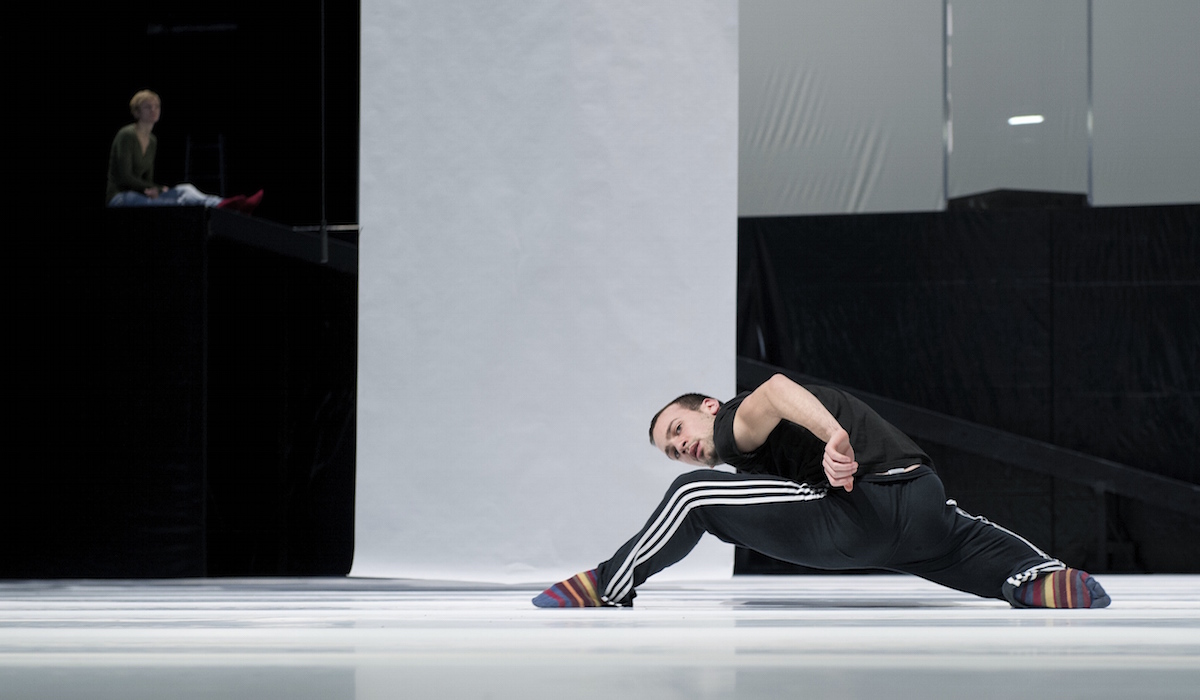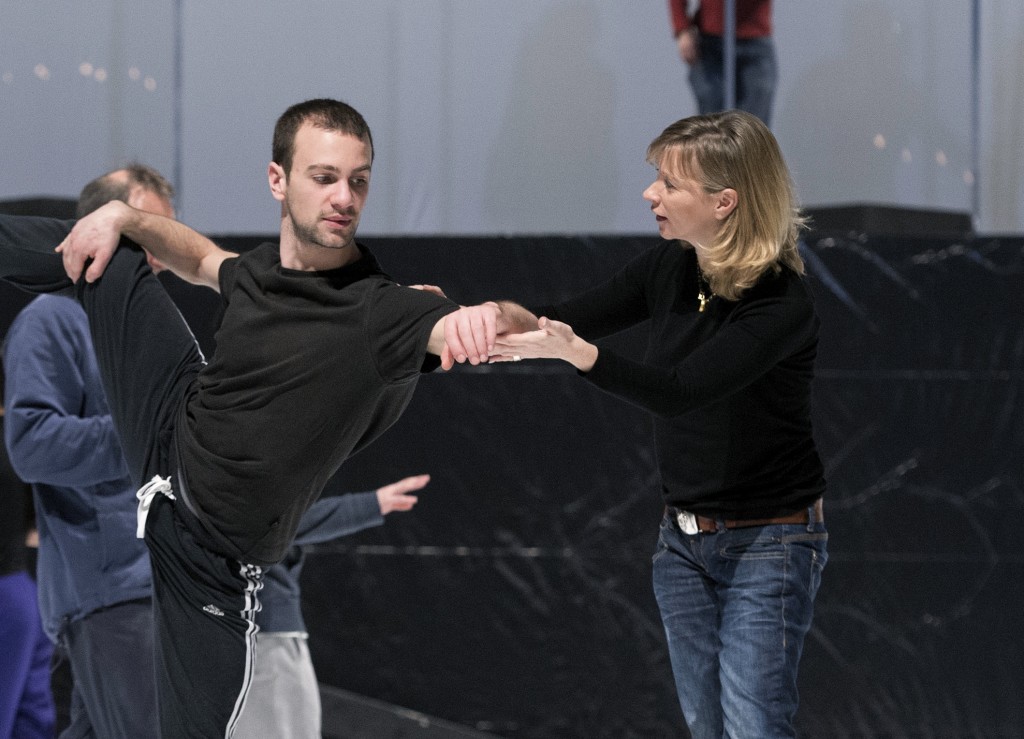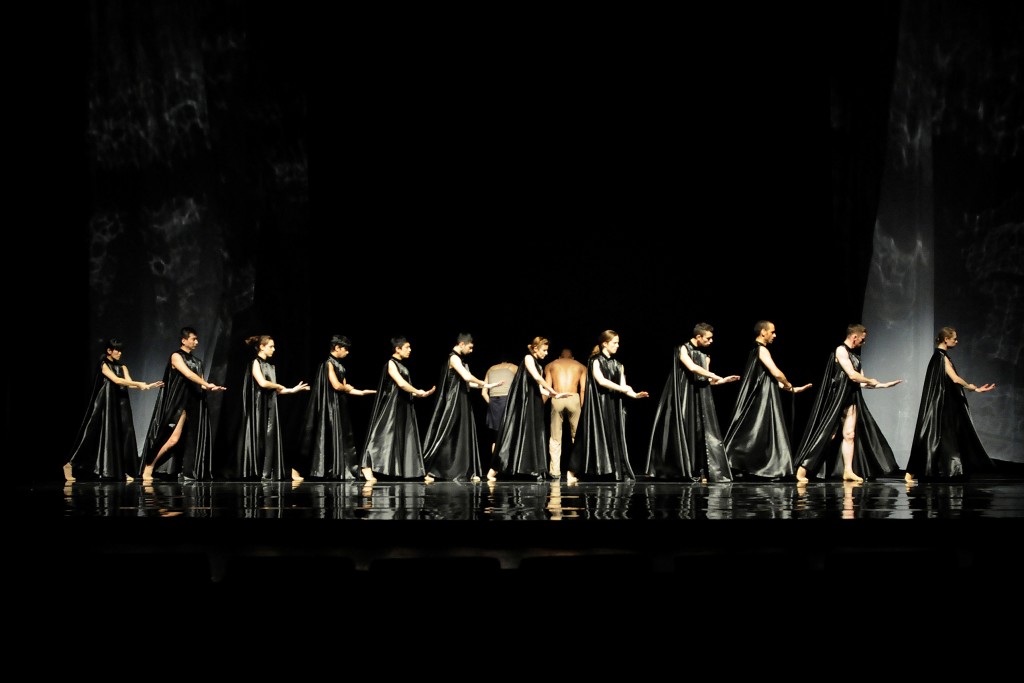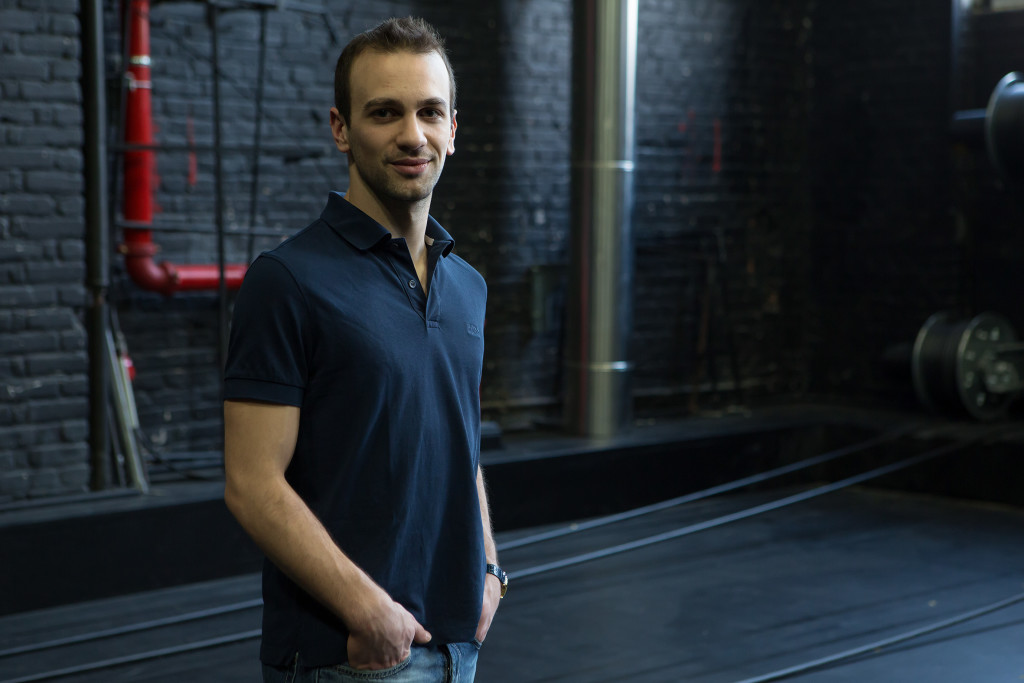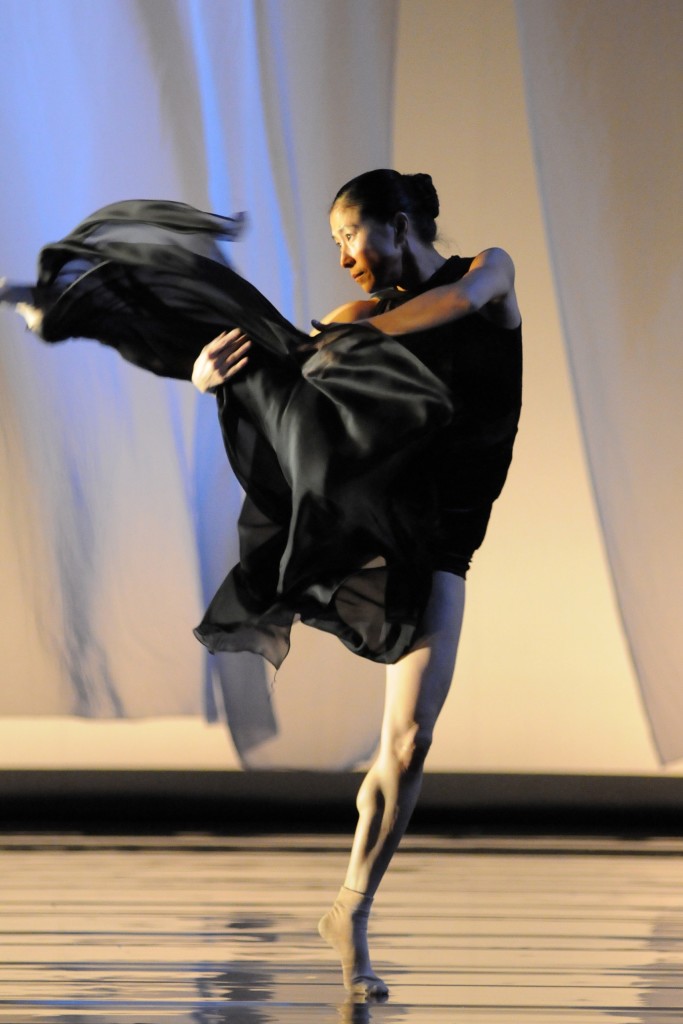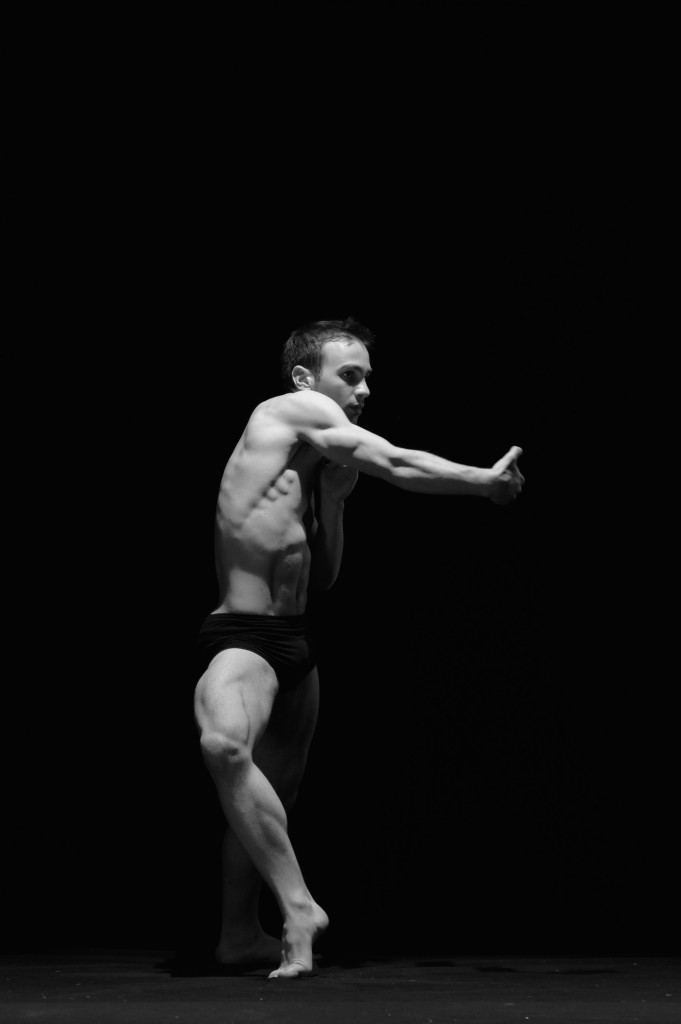Ancora adolescente, Marioenrico D’Angelo ha fatto armi e bagagli per trasferirsi a Roma da un piccolo paese dell’Abruzzo. Un ragazzo apparentemente come tanti altri, che approda in una grande metropoli per inseguire la propria passione. Una scommessa, la sua, che è stata vinta: la danza lo ha condotto in tanti luoghi stupendi, tra tournée, prove, vita teatrale. Dall’Italia alla Germania, ecco la storia di un ragazzo che ha deciso di investire nella creatività, credendo nei propri mezzi e nelle proprie potenzialità!
Marioenrico D’Angelo è la prova provata che se si hanno talento e perseveranza i sogni possono diventare realtà! Come, quando e perché hai deciso di voler diventare un ballerino?
La decisione è arrivata relativamente tardi. Sono cresciuto praticando Karate, poi ad 11 anni un’amica mi ha invitato a vedere il suo saggio di danza di fine anno. Vedere tutti quei ragazzi muoversi e divertirsi sul palco, apparentemente incuranti del pubblico e del giudizio delle altre persone è stato bellissimo. Pensai: “Anche io voglio divertirmi così”!
A soli 16 anni e dopo non molti anni di studio, se si fa riferimento ai canoni standard della danza, sei entrato in un’importante compagnia italiana, la Spellbound Contemporary Ballet, sotto la guida di Mauro Astolfi. Com’è stato il primo impatto con il mondo teatrale, le prove, le tournèe e contemporaneamente riuscire a prendere il diploma di scuola superiore?
Sono entrato in compagnia circa sei mesi dopo essermi trasferito da solo a Roma. Durante il periodo della Spellbound Contemporary Ballet per me era tutto stupendo! Lavorare in sala prove con ballerini che avevo sempre ammirato da lontano, ballare di fronte a centinaia di persone ogni sera, fare tournée spettacolari che a soli 20 anni mi hanno portato in tutta Europa e in posti come Bangkok, Seoul, New York e Houston è stato eccezionale. D’altro canto però prendere il diploma è stata davvero dura. Per tutta la durata del triennio ho dormito 4/5 ore a notte. Scuola la mattina e danza fino a sera significa studiare la notte o sui treni e gli aerei. Ho frequentato un liceo pubblico che non ha nulla a che fare con la danza e alla fine ho dovuto presentarmi agli esami statali da privatista perché la tournée con la compagnia non mi permetteva più di frequentare la scuola. La mia famiglia mi è stata vicinissima! Senza il loro sostegno, anche da lontano, non credo ce l’avrei fatta.
Ancora un passo avanti. Il diploma sei riuscito a prenderlo, ma ormai è evidente che la tua vita sia la danza. Finisce il connubio con la Spellbound Contemporary Ballet, ti ritrovi a dover cercare lavoro, come tutti i ragazzi della tua età! Che si fa? Si tenta in un’altra compagnia italiana o si punta all’estero?
Ho deciso sin da subito di puntare all’estero. Non vedevo l’Italia particolarmente interessata alla danza contemporanea, purtroppo e allo stesso tempo di conseguenza, erano davvero poche le realtà italiane che mi interessavano. In più ero estremamente attratto dalla possibilità di conoscere nuove culture.
Dopo mesi e mesi di provini in giro per il mondo arrivi in Germania, nella Donlon Dance Company. Nuovo paese, nuova coreografa, Marguerite Donlon, nuovo stile di danza, nuovi colleghi. Come hai affrontato questo ulteriore cambiamento? Considerando che a soli 22 anni ti sei già trasferito due volte.
Ho affrontato questo cambiamento con estrema curiosità! Sono entrato a far parte del Saarländisches Staatstheater di Saarbrücken senza avere la benché minima idea di cosa significasse lavorare con ballerini che hanno dai 22 ai 46 anni di età e che arrivano da tutto il mondo: USA, Giappone, Italia, Germania, Argentina, Francia, Polonia, Korea… tutte persone completamente diverse, con percorsi diversi e da cui si ha moltissimo da imparare. Ballare un nuovo stile di danza è stata la sfida che cercavo. Questa stagione ho lavorato con Marguerite Donlon, la coreografa residente del teatro che mi ha dato molta libertà di esprimermi attraverso il mio personale movimento, ma anche con Mark Baldwin dalla famosissima Rambert di Londra e Duda Paiva un coreografo brasiliano che nei suoi pezzi fa danzare i ballerini insieme a dei pupazzi di gommapiuma. Tutte sfide ardue ma interessantissime! L’anno prossimo avremo il piacere di lavorare con Stijn Celis, Alexander Ekman e Johan Inger! Dei miti!
Il 22 maggio la tua compagnia sarà in Italia per un’unica data, al Teatro Comunale Luciano Pavarotti di Modena. Lo spettacolo si chiama Amore in bianco e nero. Raccontaci un po’ di cosa parla!
Amore in bianco e nero o meglio Liebe in schwarz-weiß (siamo pur sempre un teatro statale tedesco…) è un pezzo molto piacevole basato appunto sull’ amore. Nella coreografia Marguerite Donlon ha deciso di rievocare tramite dei video ed alcuni effetti scenici i grandi film in bianco e nero del passato. Bianco e/o nero è anche la rappresentazione dell’amore stesso, il Bianco più puro e pacifico ed il Nero più violento e sofferto.
Cosa ti senti di suggerire a chi, come te, ha deciso di investire il proprio futuro nella creatività?
Fatelo! Perlomeno provateci! Se ci riuscite… complimenti! E se non dovesse funzionare avrete provato e in futuro non dovrete avere dei rimpianti. Il fallimento esiste e va accettato, è inevitabile, per tutti. È importante fallire, domandarsi il perché e andare avanti. In più io credo fortemente che ogni sacrificio che facciamo ci ripaghi sempre, in un modo o in un altro. Poi oggigiorno è difficile trovare qualsiasi lavoro, tanto vale lottare un po’ di più per quello che ci piace e ci rende felici. Come mi dice sempre mio padre: “Punta sempre al meglio, perché a scendere fai sempre in tempo”.
Photo Credits: Iris Maurer / Regina Brocke / André Mailänder
[divider]ENGLISH VERSION[/divider]
Still a teenager, Marioenrico D’Angelo moved heaven and earth to move to Rome from a small village in Abruzzo. A boy apparently likes many others, who arrive in a big city to pursue his passion. Then he won his bet: dancing led him to many wonderful places, with tours, rehearsals and theatrical life. From Italy to Germany, this is the story of a boy who decided to invest his life in creativity, believing in his abilities and his potential!
Marioenrico D’Angelo is the proof that if you have talent and perseverance, dreams can become reality! How, when and why did you decide to become a dancer?
The decision came relatively late. I grew up practicing Karate and then at 11 a friend invited me to see her year-end dance recital. Seeing all those guys moving and having fun on the stage, seemingly heedless of the public and the opinion of other people, was beautiful. I thought: “I want to have fun too!”
At only 16 years old and after many years of study, if you refer to the standard canons of the dance, you have entered a major Italian company, the Spellbound Contemporary Ballet, under the direction of Mauro Astolfi. How was your first encounter with the world of the theater, rehearsals and tours and at the same time finish the high school?
I joined the company about six months after I moved to Rome by myself. During the period of Spellbound Contemporary Ballet everything was amazing to me! Working with dancers I had always admired from afar, dancing in front of hundreds of people every night, making spectacular tour that when I was only 20 brought me throughout Europe and in places such as Bangkok, Seoul, New York and Houston, has been outstanding. On the other hand, however, finish high school was really tough. For the duration of the triennium I slept 4/5 hours per night. In the morning I went to school and then dancing until evening. That meant studying at night or on trains and planes. I attended a public high school that had nothing to do with the dance and at the end I had to do the exams as a home student because the tour with the company did not allow me to attend school no more. My family was very close to me! Without their support, even from afar, I don’t think I would have made it.
One step forward. You managed to finish school, but it is obvious that dancing is your life. It ends your bond with the Spellbound Contemporary Ballet, and you find yourself looking for a job, just like all the boys of your age! What do you do? You try with another Italian company or you point abroad?
From the beginning I decided to focus abroad. I did not see Italy particularly interested in contemporary dance, and unfortunately at the same time as a result, there were very few Italian companies that interested me. In addition I was very attracted by the opportunity to learn about new cultures.
After months and months of auditions around the world, you arrive to Germany, in the Donlon Dance Company. A new Country, a new choreographer such as Marguerite Donlon, a new style of dance and new colleagues. How did you approach this additional change? Whereas that at only 22 you had already moved twice.
I faced this change with extreme curiosity! I joined the Saarländisches Staatstheater of Saarbrücken without having the slightest idea of what it meant to work with dancers that are between 22 and 46 and come from all over the world: USA, Japan, Italy, Germany, Argentina, France, Poland, Korea … people completely different one from the other, with different paths and from whom you have a lot to learn. Dancing a new dance style was the challenge I was looking for. This season I worked with Marguerite Donlon, the resident choreographer of the theater that gave me a lot of freedom to express myself through my own movement, but also with Mark Baldwin from the famous Rambert in London and Duda Paiva a Brazilian choreographer that, in his pieces, makes the dancers dance together with puppets of foam rubber. All difficult but very interesting challenges! Next year we will have the pleasure of working with Stijn Celis, Alexander Ekman and Johan Inger! They are idols!
On May 22th, your company will be in Italy for a single date, at the Teatro Comunale Luciano Pavarotti in Modena. The show is called Amore in bianco e nero. Tell us a little what it is about!
Amore in bianco e nero or better Liebe in schwarz-weiß (we are still a German state theater…) is a very nice piece indeed based on love. In the choreography Marguerite Donlon decided to recall, through videos and some scenic effects, the great black and white movies of the past. White and/or black is also the representation of love itself; the purest and peaceful White and the more violent and painful Black.
What do you feel to suggest to those who, like you, want to invest their future in creativity?
Do it! At least try it! If you succeed… congratulations! And if you don’t, you tried and in the future you won’t have any regrets. Failure exists and it must be accepted. It is inevitable for everyone. It is important to fail, to wonder why and then to move on. In addition, I strongly believe that every sacrifice we make it always pays off in one way or another. Nowadays it is difficult to get a job, we better fight a bit more for what we like and make us happy. As my father always tells me: “Go for the very best, because you always get off in time.”
Traduzione a cura di Daniela De Angelis

